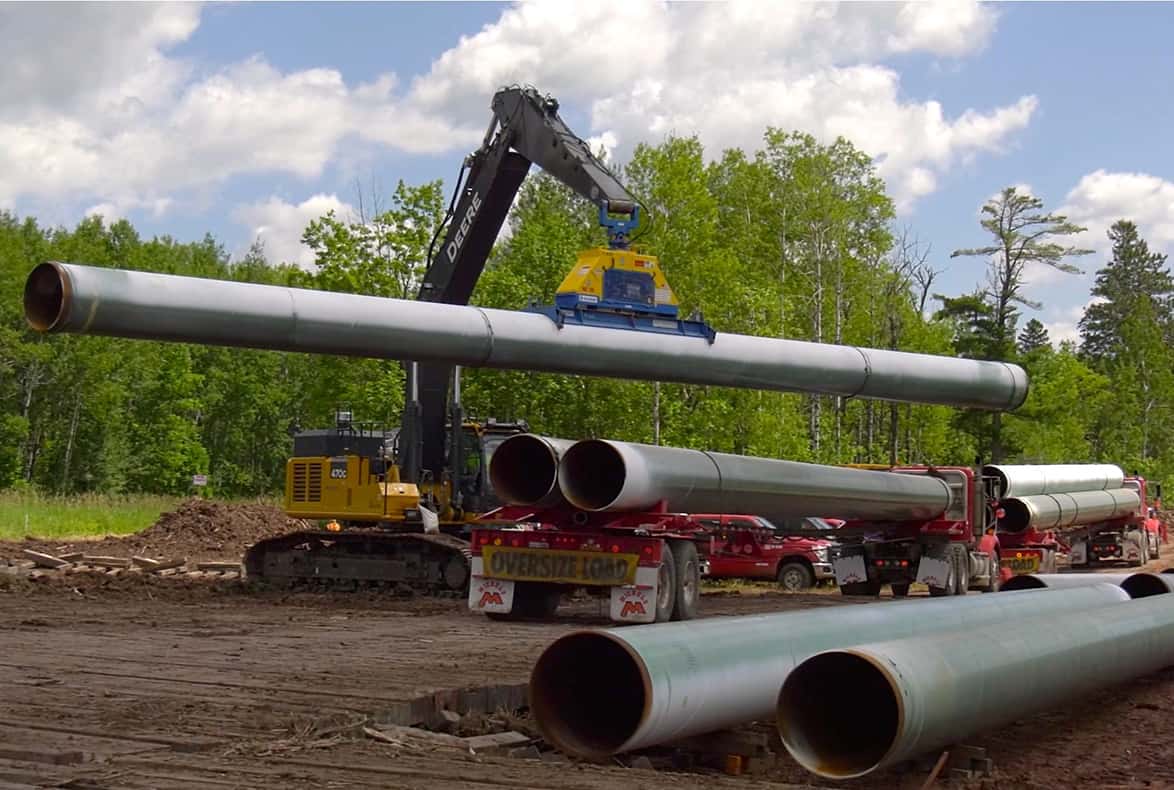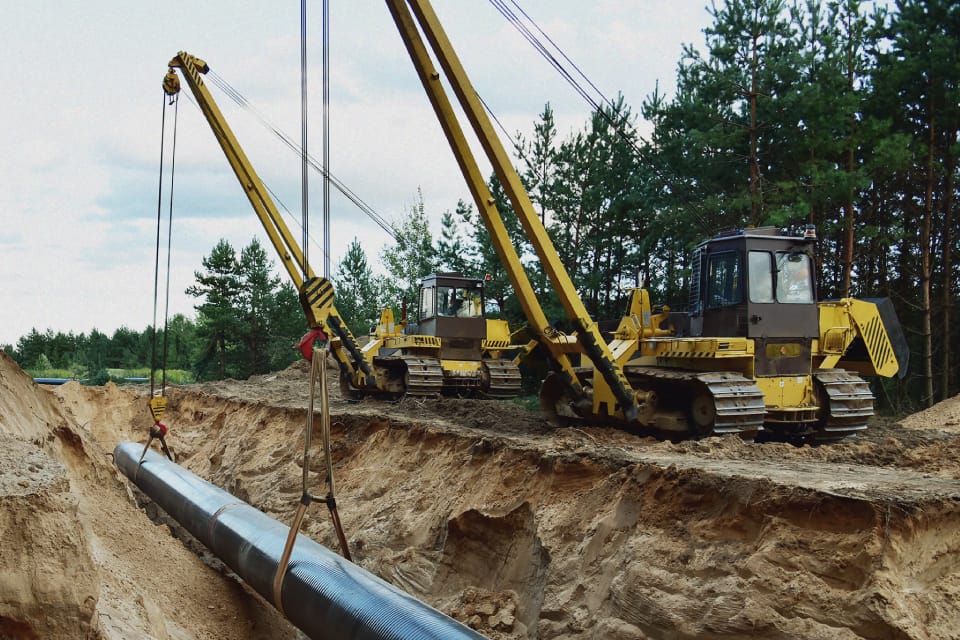Creek Pipe local contractor: Trusted methods for worker protection
Understanding the Key Attributes of Pipeline Solutions and Their Impact on Efficiency
Pipeline services play a crucial function in numerous markets, affecting functional effectiveness markedly. Secret functions, such as innovative monitoring modern technologies and maintenance strategies, are important for lessening downtime. Additionally, governing conformity guarantees safety and ecological security. The interaction between layout, infrastructure, and economic variables can make complex these procedures. Comprehending just how these elements effect overall efficiency elevates essential concerns concerning ideal techniques and future developments in the field.
The Duty of Modern Technology in Pipeline Monitoring
As developments in technology remain to advance, the importance of efficient pipe tracking has become significantly apparent. Modern pipe systems depend on advanced monitoring devices that boost functional efficiency and safety. Technologies such as real-time data analytics, sensing units, and drones give operators with instant insights into pipeline problems, enabling them to detect leaks, deterioration, and various other potential concerns before they escalate right into substantial issues.
The assimilation of Web of Points (IoT) tools has transformed typical monitoring approaches, enabling for continuous surveillance and automated reporting. This aggressive approach not only reduces risks but likewise enhances upkeep timetables and source allotment. Furthermore, progressed software program platforms promote information visualization and analysis, empowering decision-makers to respond quickly to anomalies. Jointly, these technological advancements not just enhance pipeline integrity yet also foster ecological stewardship by mitigating the possible effect of leakages and spills.
Upkeep Strategies for Boosted Effectiveness
Effective maintenance approaches are necessary for enhancing pipe performance. Applying predictive maintenance methods, adhering to routine examination methods, and creating robust emergency response strategies can substantially boost operational reliability. These techniques not just lessen downtime however additionally add to the general security and stability of pipe systems.
Predictive Maintenance Strategies
Anticipating upkeep techniques are progressively identified for their capability to boost operational effectiveness in pipe solutions. By leveraging data analytics and checking technologies, these techniques make it possible for operators to anticipate devices failures prior to they happen. This aggressive technique reduces unexpected downtime, decreases upkeep prices, and prolongs the life expectancy of crucial properties. Sensors and IoT devices play a crucial role in collecting real-time data, enabling the analysis of equipment health and performance patterns. Machine understanding algorithms analyze this data to determine patterns and anticipate potential problems. As a result, pipeline drivers can set up maintenance activities during non-peak times, maximizing source allocation and guaranteeing continual procedure. Eventually, the adoption of predictive maintenance fosters an extra trusted and effective pipeline facilities.

Regular Assessment Protocols
Routine examination methods work as a keystone of upkeep approaches targeted at boosting effectiveness in pipeline procedures - Pipeline services Midland Texas. These procedures involve methodical evaluations of pipe stability, concentrating on discovering prospective problems before they rise. Routine examinations typically include visual evaluations, leakage discovery innovations, and pressure monitoring to assure peak performance. By adhering to well-known schedules, operators can recognize deterioration, product wear, or obstruction, therefore minimizing downtime and fixing prices. Furthermore, information accumulated throughout examinations can notify predictive upkeep initiatives, enabling a positive method to pipe administration. Ultimately, regular assessments not only extend the life expectancy of pipeline framework yet also contribute to more secure and more trustworthy transport of resources, enhancing overall operational effectiveness
Emergency Response Planning
Emergency situation response planning is crucial for preserving effectiveness in pipe procedures, guaranteeing that drivers are prepared to attend to unanticipated cases quickly and successfully. A well-structured emergency situation reaction plan consists of clear protocols, assigned roles, and communication approaches to alleviate dangers connected with pipe failures. Routine drills and training boost group readiness and acquaint personnel with emergency procedures. In addition, having conveniently available sources, such as spill control tools and emergency call lists, can substantially lower response times. By integrating real-time surveillance innovations, operators can swiftly determine and react to concerns, reducing ecological influence and operational downtime. Ultimately, a thorough emergency situation reaction strategy not only safeguards properties and personnel but also enhances the overall performance of pipeline services.
Regulative Compliance and Safety Specifications
Regulative conformity and security requirements play a vital role in the pipe solutions sector. Creek Pipe local contractor. Abiding by sector laws guarantees that business apply reliable safety protocols and run the risk of management approaches. This dedication not just secures personnel and the environment but also improves total functional effectiveness
Compliance With Sector Laws
Conformity with market guidelines is essential for ensuring the safety and performance of pipeline operations. Governing structures, such as those developed by the Environmental Defense Company (EPA) and the Pipeline and Hazardous Materials Safety Management (PHMSA), set strict requirements that drivers need to follow. These policies cover numerous facets, consisting of pipeline layout, building and construction, upkeep, and monitoring, assuring that systems operate securely and properly. Non-compliance can bring about extreme charges, operational delays, and ecological dangers. By sticking to these laws, pipeline firms not just secure public safety and the environment but additionally enhance their functional efficiency. Ultimately, regulatory conformity promotes count on amongst stakeholders, guaranteeing that pipeline services can operate effortlessly in an affordable landscape while fulfilling legal navigate to this site commitments.

Safety And Security Method Application
Reliable safety procedure execution is a crucial element of pipeline operations, closely linked to regulative conformity and safety and security requirements. Complying with these methods not just ensures the defense of personnel but additionally safeguards the setting and facilities. A durable security framework consists of normal training, comprehensive evaluations, and using appropriate safety equipment. Organizations must remain attentive in updating their protocols to mirror changes in regulations and technical developments. Compliance with recognized security requirements lessens the threat of accidents and boosts operational efficiency. Additionally, a society of safety and security cultivates staff member engagement and accountability, adding to overall business success. Eventually, efficient safety method execution is critical in preserving the integrity of pipeline services and accomplishing lasting sustainability in procedures.
Threat Monitoring Methods
Executing robust risk monitoring strategies is crucial for ensuring that pipeline procedures comply with regulatory needs and security criteria. Organizations must identify prospective dangers and evaluate risks related to pipeline activities. This involves carrying out extensive examinations, utilizing innovative surveillance innovations, and maintaining compliance with industry policies. Normal training for employees on safety and security procedures improves situational understanding and prepares teams to respond efficiently to emergency situations. Furthermore, establishing contingency strategies and conducting drills can considerably minimize risks. Teaming up with regulatory bodies guarantees positioning with advancing safety and security criteria. By prioritizing risk monitoring, pipe services can improve operational performance while protecting both the atmosphere and public security. Ultimately, a proactive method to risk management cultivates a society of safety within the industry.
Pipeline Style and Facilities Considerations
Exactly how can the design and framework of pipelines influence overall functional effectiveness? The setup of pipelines plays a crucial duty in identifying their performance. Reliable design decreases rubbing losses, hence reducing energy usage during fluid transport. Elements such as diameter, product option, and format directly influence circulation prices and upkeep requirements.
Additionally, strategic placement of valves and monitoring systems improves operational control and safety and security. Creek Pipe local contractor. Framework factors to consider, consisting of access for upkeep and fixing, greatly affect downtime and total performance
Integrating sophisticated technology for real-time tracking promotes timely discovery of leaks or ineffectiveness, making sure swift feedbacks to concerns. The total structural honesty, affected by material toughness and environmental variables, also shapes lasting functional success. Thoughtful design and robust infrastructure are necessary for making best use of pipeline efficiency, eventually contributing to the reliability and profitability of pipe solutions.
Environmental Influence and Sustainability Practices
While the demand for pipe solutions remains to expand, comprehending the environmental impact and adopting sustainability practices has come to be significantly important. The building and construction and operation of pipes can significantly impact environments, wild animals habitats, and water resources. To minimize these impacts, business are implementing advanced innovations and techniques focused on lowering emissions, stopping spills, and lessening land disruption.
Sustainability initiatives typically include utilizing eco-friendly products, enhancing energy performance, and using sustainable power sources to power procedures. Furthermore, companies are progressively carrying out comprehensive environmental analyses prior to task initiation, guaranteeing conformity with policies and stakeholder engagement.

Expense Monitoring and Financial Consider Pipeline Solutions
As the pipeline market expands, effective expense monitoring and recognizing economic factors become essential for maintaining competitiveness. Companies deal with numerous financial pressures, consisting of rising have a peek at these guys and fall material prices, Learn More Here labor costs, and governing conformity fees. To navigate these difficulties, pipe company need to adopt tactical monetary planning and budgeting practices.
Buying modern technology can enhance functional efficiency, ultimately lowering costs gradually. Furthermore, efficient job management guarantees that resources are allocated effectively, decreasing hold-ups and unanticipated expenditures.

Market problems, such as demand for power and geopolitical factors, additionally influence financial feasibility. Business must remain active, changing their techniques in action to these outside aspects.
Regularly Asked Concerns
What Are the Various Kinds Of Pipeline Services Available?
Different kinds of pipeline services include transportation, storage, upkeep, examination, and repair service. Each service plays a critical role in ensuring the seamless movement of materials, improving safety and security, and reducing operational disturbances throughout various markets.
How Commonly Should Pipeline Inspections Be Performed?
Pipeline inspections must be conducted on a regular basis, usually each to three years, relying on the kind and condition of the pipe. More frequent examinations might be necessary for older or risky pipes to assure safety and security and stability.
What Are the Main Causes of Pipeline Failures?
The main reasons of pipeline failings include rust, malfunctioning building, material problems, exterior damages, leakages, and operational mistakes. Each aspect contributes substantially to possible threats, highlighting the importance of normal maintenance and monitoring for safety.
Just How Can Companies Enhance Pipeline Solution Reliability?
Business can boost pipe solution integrity by implementing normal upkeep routines, using sophisticated monitoring technologies, performing complete inspections, investing in worker training, and embracing aggressive danger management approaches to expect and mitigate prospective failings.
What Function Do Operators Play in Pipeline Services?
Operators play a crucial function in pipeline solutions by guaranteeing secure transport, preserving devices, keeping track of system integrity, coordinating upkeep, and reacting to emergency situations. Their competence directly influences functional effectiveness and reduces disturbances in solution shipment.